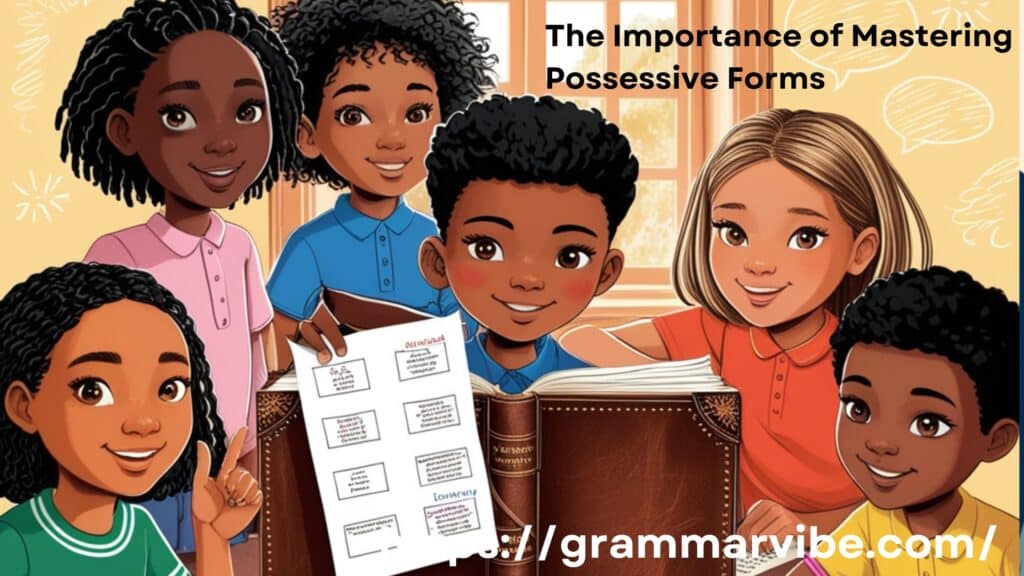In the English language, possessive forms can be tricky. Whether you’re talking about one client or many, understanding how to use client’s, clients’, and clients correctly is important.
This guide will explore the differences between these forms and provide real-life scenarios to help you master their usage.
What Does Each Term Mean?
Client (Singular Form)
The word “client” refers to one person or entity receiving a service. It’s the most basic form and doesn’t indicate possession. Here’s an example sentence:
- The client requested more information about the new product.
Clients (Plural Form)
When talking about more than one client, we use the plural form, “clients.” It’s important to remember that clients refers to multiple individuals or entities without indicating possession. An example of this would be:
- The clients attended a follow-up meeting with the project team.
Client’s (Singular Possessive)
The singular possessive form, client’s, is used when something belongs to one client. To form the client’s possessive, we add an apostrophe followed by an “s”. For instance:
- The client’s signature was missing on the contract.
In this case, the client’s signature belongs to one individual client.
Clients’ (Plural Possessive)
The plural possessive form, clients’, indicates that something belongs to multiple clients. It’s formed by adding an apostrophe after the “s”. An example sentence might be:
- The clients’ feedback was overwhelmingly positive.
Here, the feedback belongs to more than one client.
Discover more: Other Ways to Say “Have a Nice Evening”
Possessive Forms of “Client”: Breaking It Down

Let’s dive deeper into how each of these possessive forms is used in various real-world scenarios.
Client (Singular Form) in Context
In business, especially when offering services, you’ll often refer to a single client when talking about an individual interaction. Consider this scenario:
- During the appointment, the client discussed their specific requirements for the project.
In this case, you’re talking about only one person or company that is receiving a service.
Clients (Plural Form) in Context
When your business grows, you’ll be working with multiple clients. Here’s an example where you might refer to all of them collectively:
- Our goal is to ensure that all clients receive high-quality support and exceptional service.
Using clients without an apostrophe simply refers to more than one client, without indicating that something belongs to them.
Client’s (Singular Possessive) in Context
The singular possessive form, client’s, is used when something specific belongs to one client. For instance:
- The client’s files were misplaced during the office move.
In this situation, the files belong to one particular client.
Another example might be:
- The client’s satisfaction is our top priority.
Here, the satisfaction belongs to one client. You can use client’s to describe anything that one client owns, requires, or is responsible for, including physical objects like files or abstract concepts like satisfaction.
Clients’ (Plural Possessive) in Context
When discussing something that belongs to multiple clients, we use the plural possessive form, clients’. Here’s a scenario:
- The clients’ files were reviewed to ensure accuracy.
In this case, the files belong to multiple clients.
You can also use the clients’ possessive when talking about shared spaces or services, such as:
- The clients’ lounge provides complimentary refreshments.
Or:
- During the clients’ appreciation event, we gathered valuable feedback on our services.
These examples demonstrate how the clients’ possessive form is used to indicate that something belongs to more than one client.
Other articles you’ll enjoy: Past Tense of Draw: Drew or Drawn
How to Form the Correct Possessive
To summarize the rules for forming the possessive of client:
- For one client, add an apostrophe and an “s” to form client’s.
- For more than one client, add an apostrophe after the “s” to form clients’.
Let’s explore more scenarios that illustrate these differences.
Real-World Scenarios: Client’s vs. Clients’ vs. Clients

1. The Client’s Signature
When you’re working with contracts, you may need a client’s signature:
- The client’s signature was required to finalize the agreement.
Here, you are referring to one person’s signature, which belongs to the client.
2. The Clients’ Contracts
When managing contracts for multiple clients, the plural possessive form comes into play:
- The clients’ contracts were ready for renewal.
In this case, you’re talking about the contracts that belong to many clients.
3. Client Satisfaction
If you’re focusing on the experience of a single client, you’d say:
- Our client’s satisfaction is our primary concern.
However, when discussing the overall experience of multiple clients, you’d use the plural form:
- Our goal is to improve all our clients’ satisfaction levels.
In both cases, you are indicating ownership: one client in the singular possessive example and multiple clients in the plural possessive.
More for you: Story’s or Stories’ or Stories
More Examples to Clarify Usage

Singular Possessive: Client’s
- The client’s feedback helped us adjust the project requirements.
- We’ll need the client’s appointment rescheduled.
Plural Possessive: Clients’
- The clients’ opinions were divided on the new features.
- The clients’ lounge was renovated to offer a better experience.
- We organized the clients’ follow-up emails into different categories.
Standard Plural: Clients
- The clients received a thank-you note after the appreciation event.
- Our clients expect timely updates on project progress.
Common Mistakes to Avoid
One of the most frequent errors is confusing client’s and clients’. The key is to remember:
- Use client’s for one person’s possession.
- Use clients’ for something belonging to multiple people.
Another common error is using clients when you mean to indicate possession. Be mindful of when you need to add the apostrophe for ownership purposes.
For your interest: Today’s or Todays
The Importance of Mastering Possessive Forms

Understanding the difference between client’s, clients’, and clients is essential for anyone working in customer-facing industries. Whether you’re drafting emails, contracts, or reports, using the correct form conveys professionalism and clarity. Misusing these terms can confuse your message and weaken the quality of your communication.
Take this scenario:
- The clients’ results from the survey were reviewed.
This sentence indicates that the results belong to multiple clients. On the other hand:
- The client’s results were analyzed for further insights.
Here, only one client is being discussed.
Continue exploring: Other Ways to Say “Thank You for Your Attention”
Final Thoughts
Mastering the use of client, client’s, and clients’ is crucial in any field where client relationships are at the core of your business. Each form has its specific use, and mixing them up can lead to confusion or miscommunication.
Whether you’re focusing on a single client or managing interactions with many clients, using these forms correctly ensures that your writing is clear, professional, and effective. Keep in mind the possessive forms and how they apply in both singular and plural contexts. By practicing and applying these rules, you’ll become more confident in your written communication.
Make sure to double-check your usage every time you write about clients—especially when dealing with contracts, appointments, or files that are crucial to your business. Clear and correct communication builds trust, which is the foundation of great client relationships.
Table showing all the possessive forms of Client :
| Form | Usage | Example Sentence | Explanation |
|---|---|---|---|
| Client (Singular) | Refers to one client | The client confirmed the appointment. | Refers to a single person or entity without indicating possession. |
| Clients (Plural) | Refers to more than one client | The clients provided feedback after the meeting. | Refers to multiple people or entities without indicating possession. |
| Client’s (Singular Possessive) | Indicates possession by one client | The client’s signature was required on the contract. | Refers to something that belongs to one client (singular possessive). |
| Clients’ (Plural Possessive) | Indicates possession by multiple clients | The clients’ opinions were shared during the discussion. | Refers to something that belongs to more than one client (plural possessive). |

Kyren Paul is an experienced blogger and the creative mind behind “Grammar Vibe.” With a passion for the nuances of English grammar, he brings clarity and insight to everyday language topics, making grammar accessible and engaging for readers of all levels.











Leave a Comment